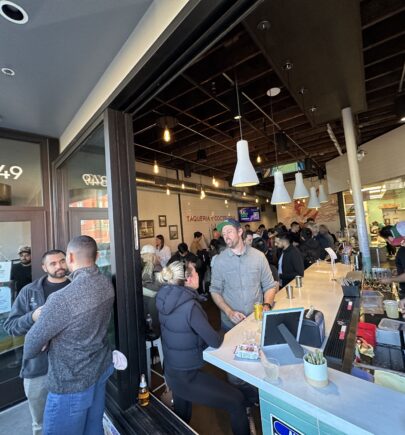A Quick FAQ Guide on How People in China Trade Crypto- Processes, Exchanges and Wallets
Since the trending topic of Tether and Bitfinex news, we’ve been approached by multiple readers on this topic- How do people in China actually get their hand on cryptocurrencies? What channels do they go through?
We here present you a quick FAQ guide on how the large retail market of citizens trades cryptocurrencies in China ?. If you know the basics, then skip down to how individuals convert fiat to Bitcoin or USDT
- I think I read somewhere online that China banned crypto trading, how are people still trading?
Let’s clarify this. China didn’t ban its citizens from trading or owning cryptocurrencies. In late 2017, what the regulators did was actually impose restrictions on the cryptocurrency trading platforms as a way to stem online trading.
More specifically, the government ordered the exchanges to shut down in China, which effectively discouraged them to stop providing services to the Chinese masses. In the period following, the regulators have repeatedly attempted to block access to all domestic and foreign cryptocurrency exchanges and ICO websites. But it did not ban citizens from participating in trading or own cryptocurrencies.
As a result of such restrictions, the exchanges ended up moving out of China. But in actuality, the only thing they moved abroad was their computing servers. In fact, most of the exchanges previously based in China continued with their business. They moved their servers to Singapore, Japan, Hong Kong, or elsewhere but the teams and people that made up these companies still operate out of China, including some of the largest exchnage such as Huobi and Binance.
In the last number of years, most exchanges have continued to thrive using new domain names under foreign identities, which allows them trade with the locals. It is still difficult for regulators to completely block access as long as the trading platform servers remain outside China, as transactions have been conducted peer-to-peer and staying decentralized.
2. So aren’t all the exchange websites blocked?
The short answer is, not all of them.
Large exchanges such as Huobi, ZB.com, for example, has multiple domain accesses. For example, If you try out the websites on the far right-hand side of the chart below, which are alternative domains/domains for alternative jurisdictions, you’ll find that they are actually accessible in China. You can also use this tool to determine whether any website is actually blocked in China.
Simultaneously, small exchanges in China have also been able to surface and operate without getting blocked.

IF the domains of the exchanges are indeed blocked, then many retail folks would use a VPN , aka a virtual private network. Here are some VPNs that are reliable with consistent connections that are recommended by crypto users in Asia. (We have no affiliation with this sites)
3. Didn’t Wechat ban crypto transactions?
Yes, Wechat recently in early May 2019 updated its payments policy and stated that it will prevent merchants on the platform from engaging in cryptocurrency-related activities. Nevertheless, there are many other alternatives, such as Alipay, bank account transfers, Paypal, Western Union and others.
There was a reported stat that mentioned Alipay and bank transfer remain the most popular payment methods among Chinese dealers nowadays. In2017, 49% of the selling ads chose Alipay as the payment channel, followed by bank transfer, which accounts for 36%. Other payment methods include WeChat, gift cards, cash deposit to bank and Paypal.
You can see from this popular Global P2P OTC called https://localbitcoins.com where individuals are currently able to purchase bitcoins from other individuals, via bank transfer, Alipay.

4. What are the most widely traded fiat to crypto pairs in China?
RMB to Bitcoin, RMB to USDT
5. What are the various ways to get from fiat to cryptocurrency in China?
There are actually many different ways to acquire cryptocurrencies in China, but for the retail folks, these are the most 2 common ways:
A-> Convert fiat to Bitcoin or USDT, via Exchange OTCs, then transfer to crypto-to-crypto exchanges
B-> Convert fiat into Bitcoin or USDT, via pure OTC platforms, then transfer to crypto-to-crypto exchanges
6. So.. what are the various ways to get from fiat to Bitcoin or USDT?
The most common way to get from fiat to Bitcoin or USDT is over the counter trading, which means a manual, direct transaction from an individual to individual, or from a business to an individual.
The most common OTC methods are via exchanges, peer-to-peer sites or offline via social payment systems or in person. Increasingly wallets are also offering OTC functions.
Instructions for Exchanging Fiat for Crypto on Exchange OTC platforms
One of the most common ways to trade fiat to crypto is through the Exchange OTC platforms. Here are the steps:
- Go to any of the aforementioned exchanges that are either not blocked or is accessible via VPN per the instructions above
- Register an account and link your social media or bank account
- Purchase USDT, which is perceived as the most liquid, stable and quickest to transact. Bitcoin is also another popular option but is deemed to not have the same price stability as USDT.
- Transfer your coins to another exchange to do trades in altcoins
Example- Checkout this youtube video from Huobi Pro on how you can first exchange USDT, Bitcoin via OTC and then transfer your digital assets to Huobi Global where there are more trading pairs available.
Note: The nuances between choosing which OTC exchange to go to depends on the trading fees, withdrawal fees, exchange liquidity, minimum USDT buy-ins, and the types of trading pairs available.
Who is providing these USDT or cryptocurrencies liquidity, you may ask? Well, when many exchanges start out, they borrow capital like USDT from Bitfinex, or other issuers to start building liquidity on their platform. This is how Huobi and many exchanges got started.
Some Popular Chinese Exchanges:
| Exchange | Exchange Type |
| Binance | Crypto to Crypto |
| Huobi Pro | Crypto to Crypto Legal currency over-the-counter fiat to crypto trading Futures |
| ZB.com | Crypto to Crypto Legal currency over-the-counter fiat to crypto trading |
| Bibox | Crypto to Crypto |
| OKEx | Crypto to Crypto Legal currency over-the-counter fiat to crypto trading futures |
| Bitfinex | Crypto to Crypto Legal currency over-the-counter fiat to crypto trading futures |
| Gate.io | Crypto to Crypto Legal currency over-the-counter fiat to crypto trading |
| DragonEx | Crypto to Crypto |
Instructions for Exchanging Fiat for Crypto on P2P OTC platforms
- Download a cryptocurrency wallet that supports BTC or Tether, or go with the native wallet on these P2P platforms
- Visit these online P2P platforms such as OTC789, LocalBitcoins.com, and Coincola. Register an account and link your payment channels and cryptocurrency wallet, follow the instructions to exchange cryptocurrencies
- To do Offline P2P transactions, identify cryptocurrency trading OTC groups and trade via Wechat*, Alipay, bank transfers, etc
7. What are the common wallets that the Chinese citizens use?
Withdrawal fees from exchanges are pretty expensive, so many people tend to keep their tokens inside the exchanges.
For P2P transactions wallets, people use wallets such as bitcoin.org, ImToken, Huobi Wallet, Bixin, and you can see a list of them here.

Any other questions or things we can clarify? Please comment in the box below.












